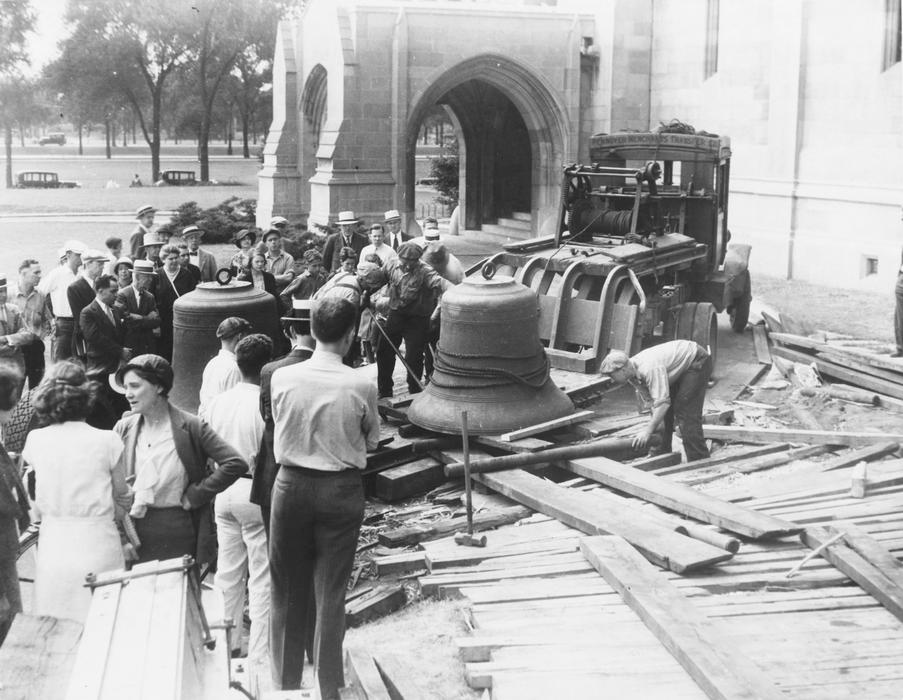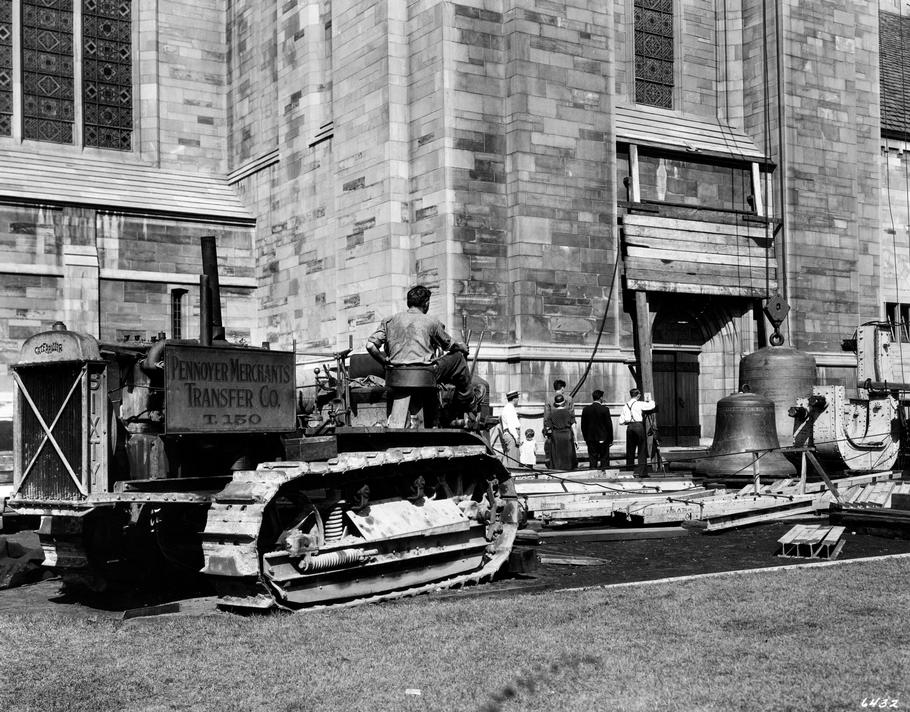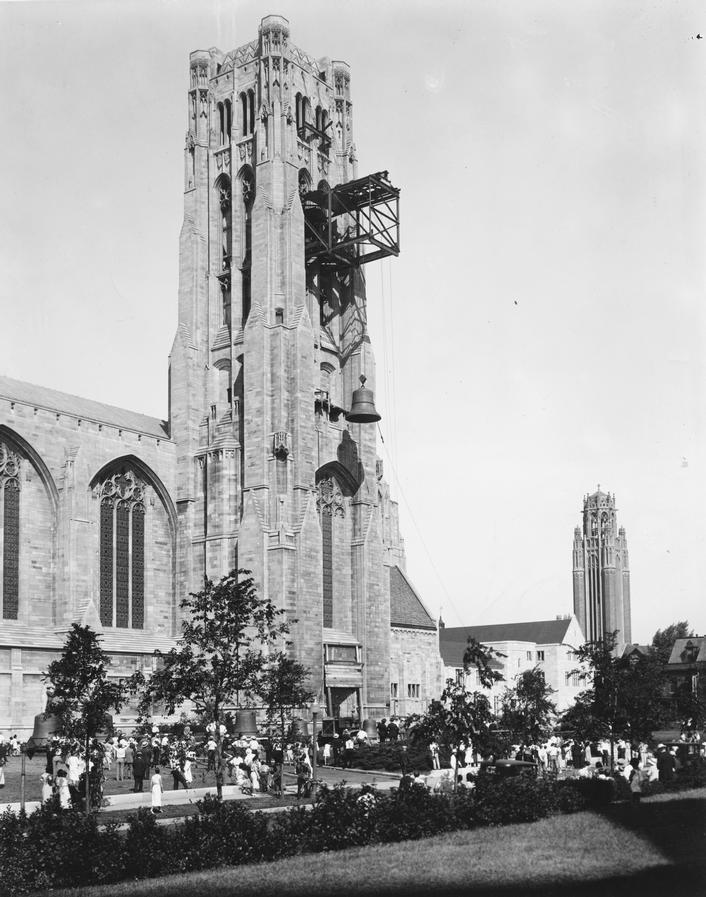Fletch
I'll Lock Up
- Messages
- 8,865
- Location
- Iowa - The Land That Stuff Forgot
The 1920s and '30s were, among other things, an era of giants. Buildings, airplanes, and much else vied to be the BIGGEST...or at least the biggest practicable and useful, at the hands of outsize governments or men fond of the grand gesture.
No man was fonder of them than mild-mannered, even sober-sided John D. Rockefeller, Jr. Personally worth the then-inconceivable sum of $140 billion, and overseer of the family foundation, he had already begun a program of philanthropic giving that may never be equaled.
In view of that, one might forgive him a few gifts toward his nearest and dearest. John Jr.'s mother, Laura Spelman Rockefeller, had died in 1915. A deeply religious woman and abolitionist (Spelman College is named for her), she also dearly loved the sound of bells. So it was that in the early 1930s, after years of planning, that Rockefeller sponsored the building of not one, but two of the world's largest musical instruments dedicated in her memory.
Carillons, simply put, are bell organs: two chromatic octaves or more of bronze bells, struck by a keyboard and pedal system that allows expressive control. Originating in the 17th century in the Low Countries of Europe, the first such instruments in North America appeared after 1900, typically given by well-heeled families or individuals to churches or universities.
The biggest carillons up till then had been found in the cathedrals of Flanders, the home region of the art. Adding bells over three or even four centuries, these might span four or even five octaves, with individual bells of anywhere from 10 pounds to 10 tons. It was in the 1920s that the English firm of Gillett & Johnston, bellfounders and clockmakers, teamed with wealthy individuals and institutions to push the limits. America and Canada would become home to the awesome instrument known as the grand carillon.
To this day, the heaviest grand carillons by weight - and the greatest in range, at six full octaves - are the two instruments dedicated to Laura Rockefeller: the first at Riverside Church, New York, finished in 1931, and the second at the University of Chicago's Rockefeller Chapel, completed in 1932. It is this second carillon - and particularly its largest bells - that are the subject of some seldom seen photographs taken before and during their installation, which are now part of the University's online photo archive.
Credit for all photos: Archival Photographic Files, Special Collections Research Center, University of Chicago Library.

July 26, 1932. The carillon arrives in New York aboard the steamship American Trader. Here are shown its nine largest bells.

The Great Bourdon is the largest, lowest, and by tradition, dedicatory bell of every carillon. Chicago's Bourdon, here being hoisted ashore by crane, weighs 36,990 pounds, about equal to a fully loaded city bus. It is 9'9" across the soundbow. To this day it remains the second largest bell ever tuned, sounding the second C# below middle C. Only Riverside Church has a bigger Bourdon, a C natural two tons heavier.

August 16, 1932. The carillon superstructure, pre-built and -tested by Gillett & Johnston to precise dimensions, is now installed inside the 207' bell tower in Chicago.


August 19, 1932. After shipment to Chicago by rail, the bells arrive at the chapel in Hyde Park, where an enthralled crowd awaits them.

After being pulled on a sledge to the base of the tower, the Bourdon is ready to be hoisted up. To the far right are frames for the five biggest bells, which allow them to be mechanically swung in a great peal.

Almost home.

The Bourdon in place.

Some smaller bells with their clapper mechanisms.

No man was fonder of them than mild-mannered, even sober-sided John D. Rockefeller, Jr. Personally worth the then-inconceivable sum of $140 billion, and overseer of the family foundation, he had already begun a program of philanthropic giving that may never be equaled.
In view of that, one might forgive him a few gifts toward his nearest and dearest. John Jr.'s mother, Laura Spelman Rockefeller, had died in 1915. A deeply religious woman and abolitionist (Spelman College is named for her), she also dearly loved the sound of bells. So it was that in the early 1930s, after years of planning, that Rockefeller sponsored the building of not one, but two of the world's largest musical instruments dedicated in her memory.
Carillons, simply put, are bell organs: two chromatic octaves or more of bronze bells, struck by a keyboard and pedal system that allows expressive control. Originating in the 17th century in the Low Countries of Europe, the first such instruments in North America appeared after 1900, typically given by well-heeled families or individuals to churches or universities.
The biggest carillons up till then had been found in the cathedrals of Flanders, the home region of the art. Adding bells over three or even four centuries, these might span four or even five octaves, with individual bells of anywhere from 10 pounds to 10 tons. It was in the 1920s that the English firm of Gillett & Johnston, bellfounders and clockmakers, teamed with wealthy individuals and institutions to push the limits. America and Canada would become home to the awesome instrument known as the grand carillon.
To this day, the heaviest grand carillons by weight - and the greatest in range, at six full octaves - are the two instruments dedicated to Laura Rockefeller: the first at Riverside Church, New York, finished in 1931, and the second at the University of Chicago's Rockefeller Chapel, completed in 1932. It is this second carillon - and particularly its largest bells - that are the subject of some seldom seen photographs taken before and during their installation, which are now part of the University's online photo archive.
Credit for all photos: Archival Photographic Files, Special Collections Research Center, University of Chicago Library.

July 26, 1932. The carillon arrives in New York aboard the steamship American Trader. Here are shown its nine largest bells.

The Great Bourdon is the largest, lowest, and by tradition, dedicatory bell of every carillon. Chicago's Bourdon, here being hoisted ashore by crane, weighs 36,990 pounds, about equal to a fully loaded city bus. It is 9'9" across the soundbow. To this day it remains the second largest bell ever tuned, sounding the second C# below middle C. Only Riverside Church has a bigger Bourdon, a C natural two tons heavier.

August 16, 1932. The carillon superstructure, pre-built and -tested by Gillett & Johnston to precise dimensions, is now installed inside the 207' bell tower in Chicago.


August 19, 1932. After shipment to Chicago by rail, the bells arrive at the chapel in Hyde Park, where an enthralled crowd awaits them.

After being pulled on a sledge to the base of the tower, the Bourdon is ready to be hoisted up. To the far right are frames for the five biggest bells, which allow them to be mechanically swung in a great peal.

Almost home.

The Bourdon in place.

Some smaller bells with their clapper mechanisms.
